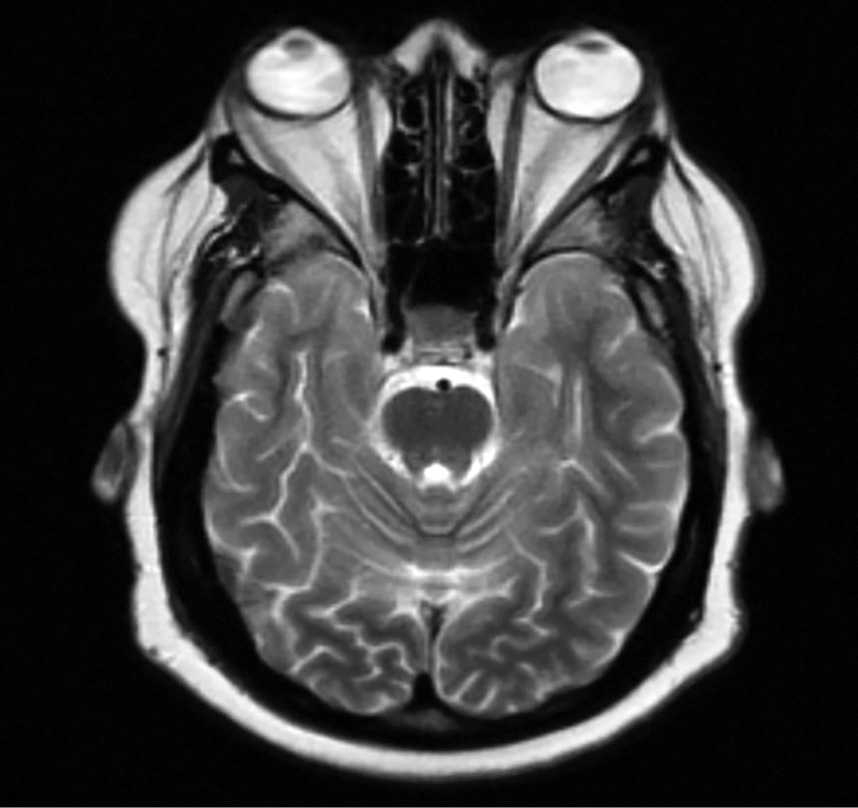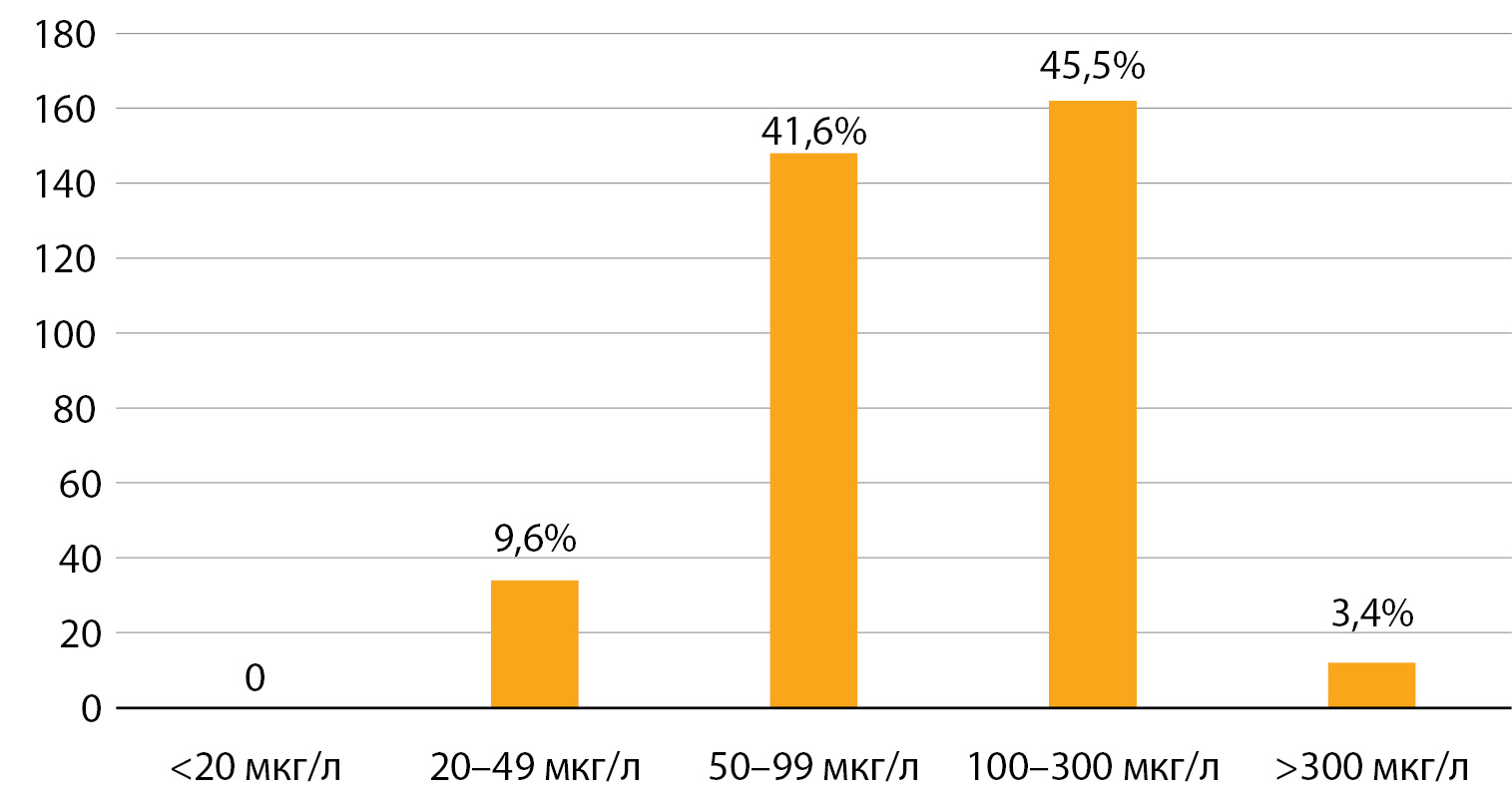Reviews
Nowadays, Cushing's syndrome (hypercortisolism) and its manifestations are well studied. The main symptoms of hyper-cortisolism are obesity, osteoporosis, cardiomyopathy, muscle atrophy, skin thinning and purple stretch marks (striae) on the body. In practice, obesity and osteoporosis are the most frequent symptoms that are found in 90% of cases. However, there are some patients with an implicit clinical picture of hypercorticism. Some cases might concomitant with exophthalmos. This review describes a rare symptom of hypercortisolism — exophthalmos. Exophthalmos is a pathological protruding of eyeballs. This symptom is known in the context of TED that occurs most commonly in patients with Graves' disease. The article compares the mechanisms of development of eye symptoms in Cushing's syndrome and thyroid diseases, especially the Graves' disease. It discusses possible molecular mechanisms leading to exophthalmia in patients with Cushing's syndrome. Factors affecting adipogenesis in vitro and in vivo are studied, in particular factors leading to an increase of orbital fatty tissue against of elevated cortisol levels. Hormonal signaling and transcription cascades responsible for adipocyte differentiation into mature fat cells are presented. Other orbital manifestations of hypercortisolism, which occur relatively rare in practice, are also discussed in the article. These include glaucoma as well as cataract, Lisha nodules and central serous chorioretinopathy. Clinical cases of Cushing's syndrome with different ocular manifestations are considered and appropriate conclusions have been drawn.
Studying of the common links of pathogenesis of endocrine, autoimmune and oncological diseases is the area of interest of researchers from all countries of the world. Comprehension of artificially created mutual influences of molecular-genetic, immune factors that underlie the development and progression of endocrine tumors, primarily thyroid cancer, is important for creation and application of innovative treatment methods in oncoendocrinology.
Today, the question of considering autoimmune diseases as a potential cause of oncological processes or on the contrary to consider them as protective conditions in some types of malignant tumors, remains controversial.
In particular, autoimmune thyropathies and papillary thyroid cancer is an interesting model for studying these complex relationships. . The purpose of this article is to discuss accumulated experience, review the literature devoted to the study of immunological aspects in the pathogenesis of papillary thyroid cancer, reconsider obtained material and form a conclusion.
Original studies
Background: The article presents the results of a control and epidemiological study conducted in September 2020 by specialists of the Federal State Budgetary Institution «NMIC of Endocrinology» of the Ministry of Health of Russia, aimed at assessing the current state of iodine provision in the population of the Republic of Crimea. The study in Crimea is part of a number of activities and work carried out on behalf of the Ministry of Health of the Russian Federation within the framework of state assignments «Scientific assessment of the need for additional regulatory legal and other measures to eliminate iodine deficiency in pilot regions with severe iodine deficiency» and «Epidemiological and molecular-cellular characteristics of tumor, autoimmune and iodine deficiency thyropathies as a basis for prevention of complications and personalization of treatment.
The data obtained reflect the state of the problem of iodine consumption on the territory of the Crimean Peninsula and indicate the relevance of the adoption of a regional preventive program aimed at eliminating iodine deficiency in the diet of the population and related diseases.
Aim: Assessment of iodine supply of the population of the Republic of Crimea
Materials and methods: The research was carried out in secondary schools of four districts of the Republic of Crimea — in the years. Simferopol, Belogorsk, Bakhchisarai and Saki.
The volume of the study — 356 schoolchildren of 8-10 years old, all were completed: taking anamnesis and anthropometric parameters (height, weight), examination by an endocrinologist with palpation of the thyroid gland (thyroid gland), ultrasound examination of the thyroid gland (thyroid ultrasound), obtaining single portions of urine and samples of table salt (5-10 grams), which is used daily in the diet in their families. The measurements of the height and weight of the children by the standard method were carried out during the examination by a specialist. Thyroid ultrasound was performed in the supine position using a portable LOGIQe ultrasound machine (China) with a 10-15 MHz multifrequency linear transducer. All urine samples (n = 356) in disposable Eppendorf microtubes were immediately frozen at a temperature of minus 20-25°! for further determination of the concentration of iodine in urine using the cerium-arsenite method (based on the clinical diagnostic laboratory of the Federal State Budgetary Institution NMITs endocrinology «of the Ministry of Health of Russia). A qualitative study for the presence of potassium iodate in food table salt samples (n = 203) was carried out on site by the express method.
Informed consent was obtained from all parents / guardians of children for the examination and processing of personal data. The permission of the local ethical committee of the Federal State Budgetary Institution «NMIC of Endocrinology» of the Ministry of Health of Russia was received on March 25, 2020, No. 5.
Results: According to the results of a survey of 356 children of primary school age, the median concentration of iodine in urine (mCIM) is 97 pg / l and varies from 78 to 98 pg / l in the surveyed areas, the proportion of urine samples with a reduced iodine concentration was 51.2%. The share of iodized salt use in the families of schoolchildren was 12.3% (values range from 10% to 15%). The average incidence of goiter in children according to ultrasound data is 9.5% (range of values from 1.7% to 16.3%).
Conclusion.
- The indicator of the median concentration of iodine in urine indicates an insufficient iodine supply of the population of the Republic of Crimea.
- The prevalence of goiter in children of primary school age according to the ultrasound examination of the thyroid gland corresponds to the mild severity of iodine deficiency in the mild degree of goiter endemic in the region.
- The share of households using iodized salt is extremely low and amounts to 12.3%, which does not meet the WHO recommendations for regions with natural iodine deficiency (from 90% or more).
Background: Thyroid stimulating hormone (TSH) and thyroxine levels may change according to fasting — satiety status. AIM: The aim of this study was to determine the effect of satiety on TSH and free thyroxine levels.
Methods: This study was conducted in a tertiary hospital. According to previous TSH and thyroxine levels, groups of 30, 30 and 60 participants were designated as subclinical hypothyroidism, hypothyroidism, and control groups respectively. To obtain TSH and thyroxine results first phlebotomy was performed at 8 am while participants were in fasting state. Then participants were allowed to have non-standardized breakfast. Second phlebotomy was performed at 10 am while participants were in non-fasting state. Paired t-test and ANOVA were used to analyze the data.
Results: The fasting TSH levels of the participants (2.57 ± 1.84 mlU/L) were significantly higher than the satiety TSH levels (2.04 ± 1.48 mlU/L) (t = 8.566, p < 0.001, d = 0.80). The fasting free thyroxine values (1.31 ± 0.38 mg/dl) of the participants were significantly lower than the satiety free thyroxine values (1.39 ± 0.35 mg/dl) (t = -1.988, p = 0.049, d = 0.20).
Conclusion: Knowing how TSH and free thyroxine tests are affected by satiety has the power to affect treatment of many patients. Our study has shown that both TSH and free thyroxine levels changed significantly according to satiety status.

This work is licensed under a Creative Commons Attribution-NonCommercial-NoDerivatives 4.0 International License (CC BY-NC-ND 4.0).
ISSN 2310-3787 (Online)







































